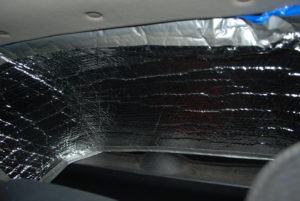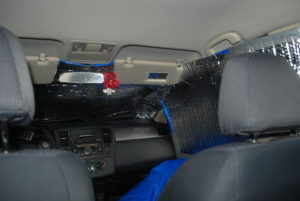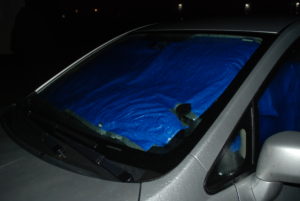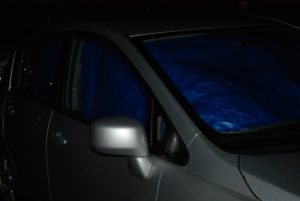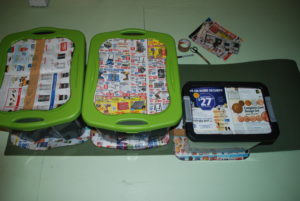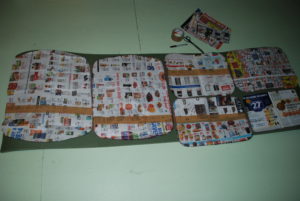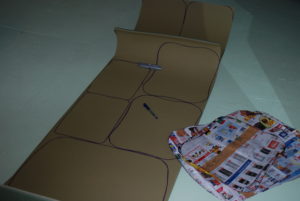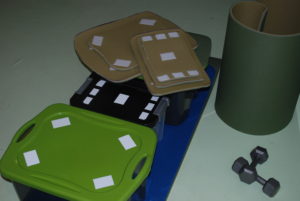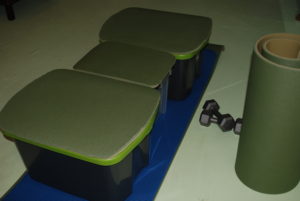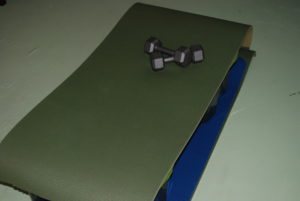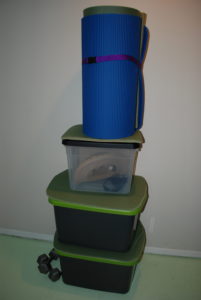Before moving on from the home away from home, car sleep platform project, I also made insulated privacy panels for the windows. Rolls of thin thermal tinfoil with bubblewrap like interior is available in home improvement stores. I used nine feet of a four foot wide roll (25 ft by 4 ft) to make four panels to cover my car windows when needed. The tinfoil is very reflective so I duct-taped a layer of blue tarp to one side for the exterior side and left the other side the reflective material. It amplifies any light source that is being used inside of the car at night and might have been an overly reflective danger for oncoming traffic that wouldn’t expect a large reflective flash of light.
The insulation is flexible but thick enough at 1/4 inch that combined with the tarp it stays in place when wedged in to place wherever there is something to give a little support. In the front the visors help hold it in place and the door panels stand on the doorknobs and are held in place by the visors. The front panel has an area sliced to fit the mirror and the GPS device and those also help hold it in place.
I measured the windows and drew a picture as a guide to cut the insulation. The back window is the smallest and it is held in place by the hatchback groove and two little knobs that hold a cover for the trunk area.
Extra pieces of tarp were left which I duct-taped into a carrier for storing all the pieces in when not in use when they are folded in half.
See this post for more information about the sleep platform and link to the first post on the topic: Thinking Outside the (Tote) Box.
*If this project seems like a lot of work – reminder, my family traveled with a traditional style tipi that my parents made by hand. My father even cut and trimmed the pine trees that were used for the poles.
Projects can be accomplished and this prototype project is still somewhat of a work in progress. I haven’t tested the warmth/privacy panels on a road trip yet but the sleep platform is fairly comfortable compared to trying to sleep sitting in the front seat or laying down on a back seat. Specially designed air mattresses are available for larger vehicles that have seats that fold down however you couldn’t also store anything in the air mattress or use it as individual seats or as a mini-couch/exercise bench when not traveling.
Disclaimer: Opinions are my own and the information is provided for educational purposes within the guidelines of fair use. While I am a Registered Dietitian this information is not intended to provide individual health guidance. Please see a health professional for individual health care purposes.

